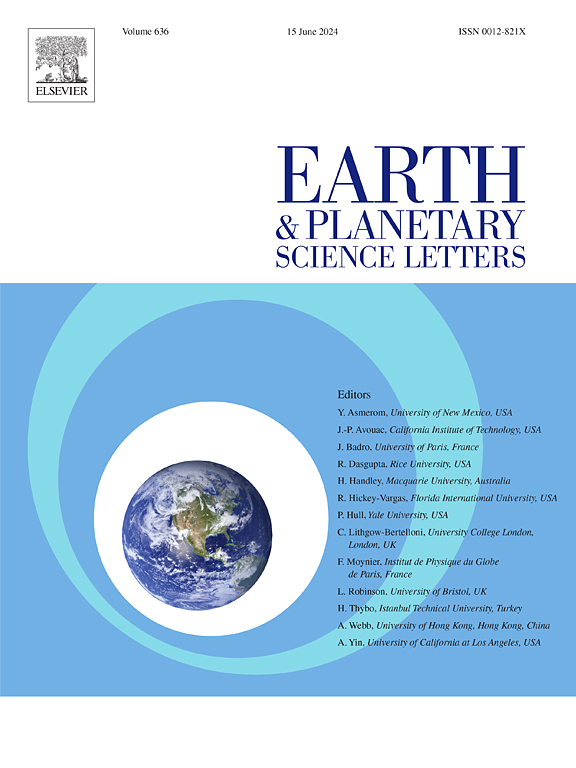Unraveling the key factors controlling active faulting in Tertiary and Quaternary sequences
IF 4.8
1区 地球科学
Q1 GEOCHEMISTRY & GEOPHYSICS
引用次数: 0
Abstract
The effects of across-fault variation of mechanical properties and along-fault lithological heterogeneity on the seismicity of active faults is poorly understood. Moreover, the role of chemical processes on the mechanical behavior of active faults has not yet received sufficient attention. Such phenomena have more relevance, especially when faults juxtapose chemically reactive carbonate-dominated host rocks. In this study, we examine the key controls on active faulting by utilizing excellent outcrops of an intrabasinal strike-slip fault cutting across Tertiary and Quaternary sequences. We integrate structural, geomechanical and mineralogical investigations of faults and adjacent host rocks geographically exposed at different structural positions along the length of a 30 km-long, NE-SW-striking Galera Fault (GF) in Guadix-Baza basin, SE Spain. Our results show that fault and host rocks along the GF become carbonate-rich predominantly consisting of calcite towards NE. The thickness of sedimentary cover increases towards SW, where gypsum and phyllosilicate minerals are dominant. Calcite precipitation in fault rocks leads to reduction of porosity and significant enhancement of P-wave velocity (Vp), relative to the adjacent host rocks, and makes the fault zone more prone to seismic slip. On the contrary, phyllosilicates including clay mineral assemblages reduce the strength of the fault rocks and promote aseismic creep. The relationship between Vp and modified estimate of Brittleness Index used in this study indicate that the mineral assemblage of the fault as well as the adjacent host rocks influence seismicity. Our novel approach predicts more seismic activity towards the NE-part of GF due to dominance of calcite-rich rocks and proximity to the basement. This is validated by earthquake records in the studied area, which document shallow earthquakes concentrated towards the NE-part of GF. Thus, our study highlights the importance of adopting interdisciplinary approaches and understanding of the basin architecture controlling the distribution of host rocks to comprehend complex processes associated with active faulting.

求助全文
约1分钟内获得全文
求助全文
来源期刊

Earth and Planetary Science Letters
地学-地球化学与地球物理
CiteScore
10.30
自引率
5.70%
发文量
475
审稿时长
2.8 months
期刊介绍:
Earth and Planetary Science Letters (EPSL) is a leading journal for researchers across the entire Earth and planetary sciences community. It publishes concise, exciting, high-impact articles ("Letters") of broad interest. Its focus is on physical and chemical processes, the evolution and general properties of the Earth and planets - from their deep interiors to their atmospheres. EPSL also includes a Frontiers section, featuring invited high-profile synthesis articles by leading experts on timely topics to bring cutting-edge research to the wider community.
 求助内容:
求助内容: 应助结果提醒方式:
应助结果提醒方式:


